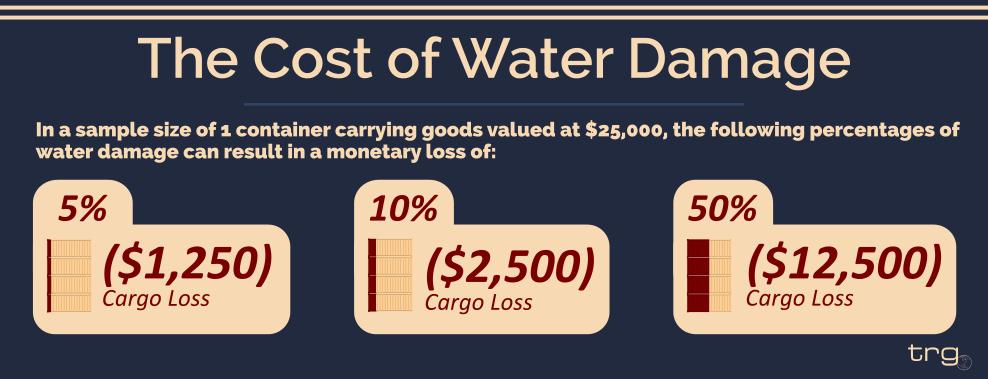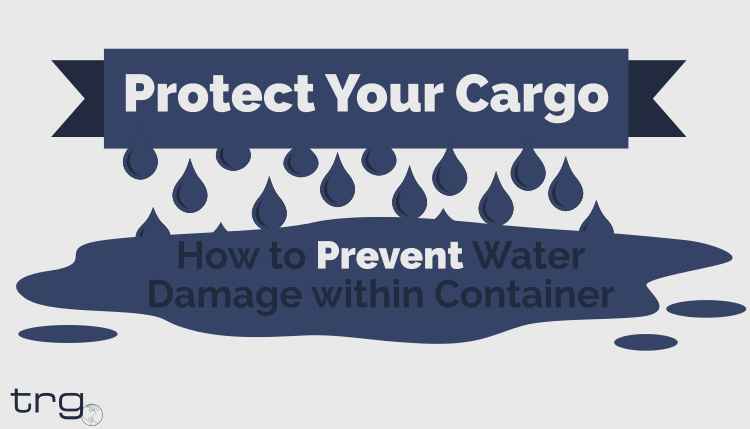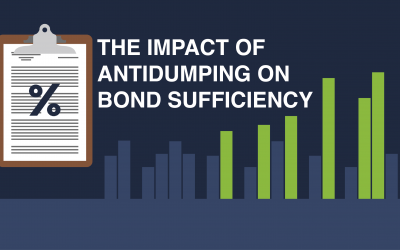The dangers of international trade are varied and hard to predict so it is important to protect yourself from loss along the way. Be prepared for any situation with these suggestions to prevent moisture damage.
About 10% of all container shipments must be discarded due to moisture related damage. This percentage becomes more significant when you realize the monetary amount it equals in cargo loss. If you have a container carrying goods valued at $25,000, then a 10% loss would equal $2,500 while a 50% loss would equal $12,500.

What Causes Moisture inside Containers?
Moisture inside a sealed shipping container is primarily due to condensation which results in container rain. This condensation is formed when the air inside the container is no longer able to hold moisture so it is released onto the cargo inside. For more information about how water gets inside containers and container rain see our previous blog post.
How to Prevent Water Damage inside Shipping Containers
As you can see, it is inevitable that moisture will get inside your containers even though they are sealed throughout the supply chain. However, there are a few ways to prevent water damage once your goods are within the shipping container.
- Ventilation of the Shipping Container
Adding a small weather-protected vent to your shipping container can decrease the amount of condensation within the container by releasing the excess moisture. The vents allow the container to “breathe” with the rise and fall of the exterior temperatures which helps prevent moisture damage.
However, some have found that vents placed on the doors of the container are more effective than vents on the sides since containers are typically packed side to side on the ship. This ensures that airflow will not be constricted in transit. - Dehumidifers
A dehumidifier works within the container to remove the moisture from the air. The water extracted by the humidifier should be dumped through pipework to the exterior of the container to prevent re-circulation. Some of these devices include an on/off switch that reacts to the amount of moisture in the air and saves energy. - Moisture Absorbing Poles
Moisture absorbing poles are non-mechanical devices that fit within the corrugated sidewall of the shipping container. Salts are contained within these poles which absorbs the moisture in the air and then ‘dumps’ it into a gel that forms the tank of the pole. Each pole typically lasts for a few months depending on the humidity levels within the container. - Grafotherm
Grafotherm is a non-condensation coating applied to the ceiling and six interior sides of the container. This coating acts as insulation and can also retain some moisture within its structure. - Container Lining
Including a thermal lining inside your container can help reduce the amount of condensation and prevent moisture damage. These linings help regulate the temperature within the container to reduce the extreme changes undergone through the supply chain. However, since condensation is an airborne issue, linings are not able to remove the risk entirely.
Protect Your Cargo Investment
It is not uncommon for cargo to arrive at port with damage even when measures have been taken to prevent moisture damage and protect the goods. In these cases, many insurers consider this a naturally occurring event that can be anticipated so it is often not covered. However, having a policy in place is still the best course of action.
Marine Insurance will protect your overall investment in the goods you have imported into the United States since most all-risk policies include coverage for water damage and the cost to destroy damaged goods. Although you should always double check with your insurance provider to ensure you are covered.







![[Webinar] How to Lower the Cost to Protect Your Warehouse](https://traderiskguaranty.com/trgpeak/wp-content/uploads/2023/10/2023.10_Warehouse-and-Property-Insurance_Page_01-400x250.png)